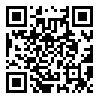目的 运用数据挖掘技术探讨中医治疗小儿遗尿的用药规律。方法 检索中国知网、万方数据知识服务平台、维普资讯中文期刊服务平台、中国生物医学文献服务系统、PubMed、Embase等数据库,筛选2000年1月至2023年9月关于中医治疗小儿遗尿的相关文献。利用中医传承计算平台(V3.0)统计分析中医治疗小儿遗尿的治法、药物的使用频次、性味、归经和功效,并进行关联规则分析和聚类分析。结果 共纳入处方143首,涉及中医治疗方法18种,其中使用频次排名前5的依次为温补肾阳、涩精止遗、健脾益气、补肺益气、补肾益气;涉及中药159味,其中使用频次≥20次的高频药物共24味,排名前5的依次为益智、桑螵蛸、山药、石菖蒲、黄芪;四气以温性、平性为主,五味以甘味、辛味常见,归经以肾经、脾经居多;药物功效以补虚类和收涩类居多。关联规则分析得到常用药物组合39个,支持度位居前5的药物组合为“益智→乌药”“益智→桑螵蛸”“益智→山药”“益智→石菖蒲”“益智→黄芪”;聚类分析得到4类核心药物组合。结论 中医治疗小儿遗尿以补虚药与收涩药为主,注重补虚,补中寓收,以补益脾肾、涩精止遗为主要治法,辅以开窍通闭、交通心肾、疏肝解郁等治疗原则。
广西医学 页码:230-236
作者机构:王乙,在读硕士研究生,研究方向为中西医结合治疗儿童肾系疾病。
基金信息:中日友好医院高水平医院临床业务费专项研究类项目(2024⁃NHLHCRF⁃PY 1⁃05)
- 中文简介
- 英文简介
- 参考文献
Objective To investigate the medication rule of Traditional Chinese Medicine for the treatment of children with enuresis by using data mining technique. Methods Literature related to Traditional Chinese Medicine for the treatment of children with enuresis was screened from retrieving the databases such as China National Knowledge Infrastructure, Wanfang Data Knowledge Service Platform, VIP, China Biology Medicine disc, PubMed, and Embase from January 2000 to September 2023. The Traditional Chinese Medicine Inheritance Computing Platform (V3.0) was adopted to statistically analyze therapy of Traditional Chinese Medicine for the treatment of children with enuresis, and use frequency, property and flavor, meridians and effects of drugs, as well as to perform association rule analysis and cluster analysis. Results A total of 143 prescriptions were enrolled, concerning 18 categories of Traditional Chinese Medicine therapies, therein the top five most frequently used were as follows: warming and strengthening kidney yang, astringing essence and stopping enuresis, invigorating spleen and replenishing qi, tonifying lung and replenishing qi, and tonifying kidney and replenishing qi, successively; furthermore, concerning 159 flavors of Traditional Chinese Medicines, among which high⁃frequency drugs with use frequency≥20 times were 24 flavors, and the top five went to Alpiniae oxyphyliae fructus, Mantidis ootheca, Rhizoma Dioscoreae, Acoritataninowii rhizoma, Hedysarum multijugum, the four properties were mainly warm and moderate, the five flavors were mainly sweet and acrid, and meridians were mainly kidney meridian and spleen meridian, and effects of drugs were mainly tonifying deficiency and astringents. A total of 39 drug combinations were obtained by the association rule analysis, and the top 5 drug combinations with high support degree were Alpiniae oxyphyliae fructus→Linderae radix, Alpiniae oxyphyliae fructus→Mantidis ootheca, Alpiniae oxyphyliae fructus→Rhizoma Dioscoreae, Alpiniae oxyphyliae fructus→Acoritataninowii rhizoma, Alpiniae oxyphyliae fructus→Hedysarum multijugum. A total of 4 categories of core drug combinations were acquired by the cluster analysis. Conclusion In the treatment of enuresis in children, Traditional Chinese Medicine mainly focuses on tonifying deficiency drugs and astringents, and focuses on tonifying deficiency, strengthening middle⁃energizer, tonifying spleen and kidney, astringing essence and stopping enuresis as the main therapy, as well as supplemented by the therapeutic principles such as resuscitation and removing occlusion, keeping coordination between heart and kidney, and soothing liver to remove stagnancy of liver qi.
-
无




 注册
注册 忘记密码
忘记密码 忘记用户名
忘记用户名 专家账号密码找回
专家账号密码找回 下载
下载 收藏
收藏
